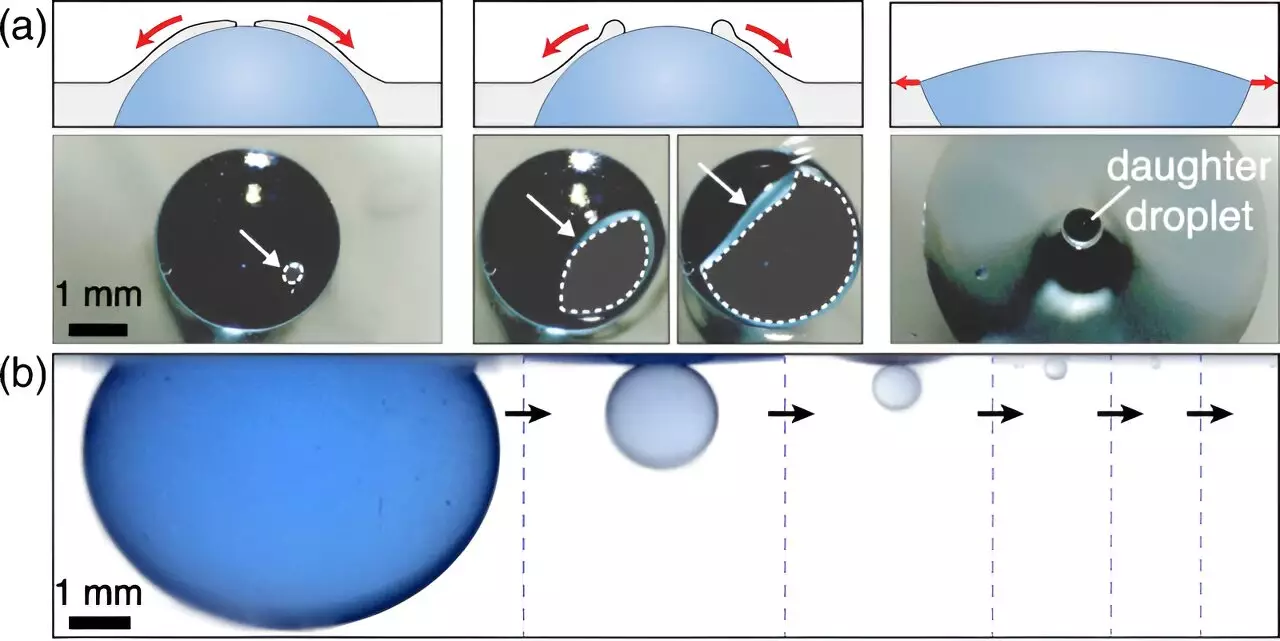Oil spills are a major environmental concern that can have devastating effects on marine ecosystems. Recent research from the University of Illinois Chicago has shed light on a previously unknown pathway by which oil can spread pollution inside the ocean. The study, led by Sushant Anand, has revealed that oil drops from underwater oil spills can break into tinier droplets at the surface, remaining suspended in the water and potentially causing long-term damage.
Traditionally, it was believed that oil drops reaching the water’s surface would simply turn into a flat film, forming an oil slick. However, the research conducted by the UIC team uncovered a different pattern. When oil drops reach the surface, they remain partially submerged for a period, leading to the formation of smaller “daughter” drops that remain suspended in the water. This process repeats itself, creating a cycle of tiny droplets that are harder to clean up.
The discovery of this underwater oil dispersion pathway has significant environmental implications. Oil spill cleanups have historically focused on addressing the slick that forms above the surface, overlooking the presence of oil droplets beneath the water. This new information highlights the importance of understanding the mechanics of oil dispersion to develop more effective cleanup strategies.
One potential solution identified by the researchers is increasing the viscosity of the water to keep oil drops intact. By preventing the formation of daughter drops, cleanup efforts could be made more efficient. Additionally, the use of biodegradable, water-soluble compounds at the site of a spill could help mitigate the spread of oil pollution in the ocean.
The impact of oil droplets from underwater spills is not limited to the ocean. Pipelines running under lakes and rivers, as well as oil spills from ships, can also release oil droplets that remain suspended in the water. The findings of this research have broader implications for understanding the dynamics of oil dispersion in different aquatic environments.
The research conducted by the UIC team has revealed a previously unknown pathway by which oil can spread pollution inside the ocean. Understanding the mechanics of oil dispersion is crucial for developing effective cleanup strategies and mitigating the impact of underwater oil spills. Future research should investigate the implications of tiny oil droplets on underwater species, and oil companies should consider incorporating this information into their spill prediction models. By addressing the hidden impact of oil droplets from spills, we can work towards a cleaner and healthier marine environment.


Leave a Reply